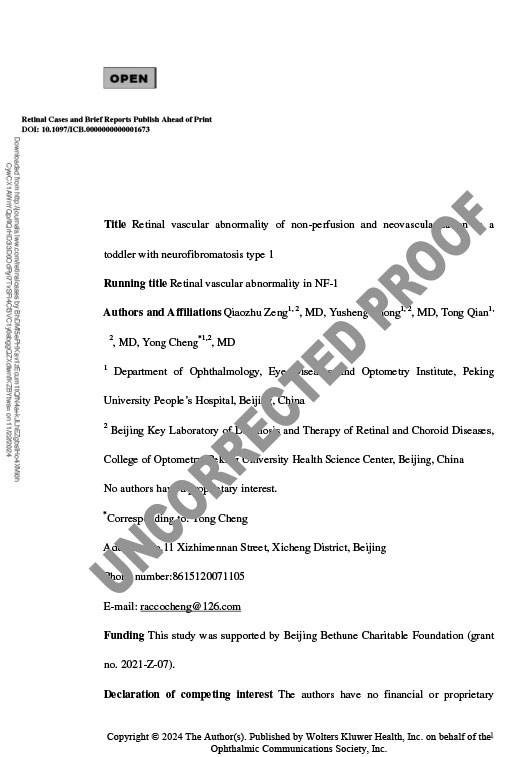Retinal vascular abnormality of non-perfusion and neovascularization in a toddler with neurofibromatosis type 1
November 2024
Abstract
Purpose: This report describes the case of a 13-month-old boy diagnosed with neurofibromatosis type 1, who presented with retinal vascular abnormalities including extensive non-perfusion and neovascularization. We also discuss the observed changes following photocoagulation treatment.
Methods: A 13-month-old boy presented to the Department of Ophthalmology at Peking University People’s Hospital with a reduction in the width of the left palpebral fissure for the past 6 months.
Results: The boy exhibited more than six café-au-lait spots larger than 5 mm in diameter on his trunk and legs. Fundus examination of the left eye revealed significant neovascularization in the temporal periphery of the retina, with late leakage and non-perfusion also noted temporally in fluorescein angiography (FA). Magnetic resonance imaging of the brain and orbits showed an enlarged left sphenoid body, a widened left cavernous sinus, and a large plexiform neurofibroma. Laser treatment was performed on the left eye. Five months later, the neovascularization was controlled.
Conclusion: Careful fundus examinations and systemic reviews, especially FA, are essential. Timely laser treatment is crucial for controlling disease progression and preventing retinal detachment.

